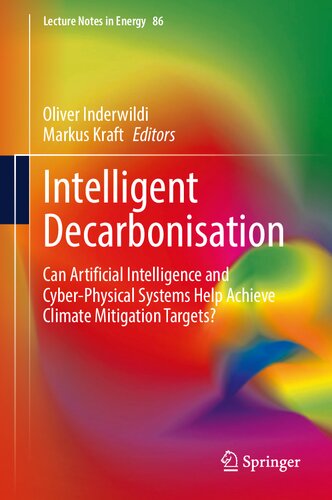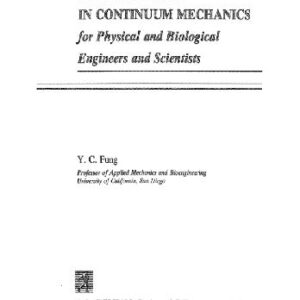The book explains the need to decarbonise energy supplies, urban systems and industrial processes to reduce global greenhouse gases and meet the ambitious emissions reduction goals set out in the Paris Agreement 2016. It discusses how the introduction of AI to cyber-physical systems (CPS) can do this, using illustrations throughout to highlight the potential impacts.Intelligent Decarbonisation comprehensively assesses the current and future impact of digital technologies and artificial intelligence (AI) on the decarbonisation of key economic sectors.The book is divided into four parts ? Technology, Impact, Implications and Incubation ? moving clearly from the theoretical and technical to the real-world effects and areas for future development. It also presents insights into the economic and environmental transformation fostered by digital technologies.Intelligent Decarbonisation brings together work from private and public sector professionals, academics and think tank experts, and provides truly comprehensive insights into the topic. It is an interesting and informative text for policymakers, researchers and industry professionals alike.Table of contents :PrefaceAcknowledgementsContentsPart I Introduction1 Introduction1.1 Introduction1.2 Climate Change1.3 The 4th Industrial Revolution1.3.1 Accelerating Change1.3.2 Digitalisation and Digital Twins1.4 Risks and Opportunities of Artificial Intelligence1.4.1 AI for Interconnecting and Improving Systems1.4.2 The Risks of Machine Intelligence1.5 Concluding RemarksReferencesPart II Methods & Technology2 Cyber-Physical Systems in Decarbonisation2.1 Introduction2.2 Cyber-Physical Systems2.3 Economic and Environmental Impact Assessment2.3.1 Case Studies2.3.2 Impact on the Marginal Abatement Cost Curve2.4 Conclusions2.5 OutlookReferences3 Artificial Intelligence3.1 Introduction3.2 Main Text3.2.1 The Advent of AI3.2.2 Getting Deep3.2.3 Leaving Specificity3.2.4 The Economics of the AI Age3.2.5 The Risks of AI3.3 Conclusions3.4 OutlookReferences4 The World Avatar?A World Model for Facilitating Interoperability4.1 Introduction4.2 The World Avatar?A Dynamic knowledge Graph4.3 Use Cases4.3.1 Digital Twinning?Intelligent Control Strategies4.3.2 Digital Twinning?Intelligent Design Strategies4.4 Outlook and ConclusionReferences5 Insights: AI and Decarbonisation6 Insights: Intelligent Decarbonisation in Singapore7 Blockchain for Decarbonization7.1 Introduction7.2 Blockchain in the Energy Market7.3 Blockchain in the Chemical and Manufacturing Industry7.4 Blockchain and Carbon Trading7.5 OutlookReferencesPart III Sectors & Impact8 Cyber Physical Production Systems and Their Role for Decarbonization of Industry8.1 Introduction8.2 Energy Flows in Industry and CPPS8.2.1 System Definition8.2.2 Industrial Energy Flows and Related Emissions8.2.3 Leverages for Decarbonization Through CPPS8.2.4 Related Challenges8.3 Conclusions and OutlookReferences9 Insights: Green Verbund10 Green, Lean and Digital Transformation for Decarbonisation of Chemical Industries10.1 Introduction10.2 Green, Lean and Digital Transformation10.2.1 Status and Current Obstacles10.2.2 Chemistry 4.0 Tools and Methods10.2.3 Opportunities for Carbon Emissions and Cost Reduction?Game Changers10.2.4 Opportunities for Carbon Emissions and Cost Reduction?Incremental Improvements10.3 Conclusions10.4 OutlookReferences11 Insights: Process Automation12 Intelligent Electricity Grid Management12.1 Introduction12.2 Electricity and GHG Reduction12.2.1 Smart Grids and Factors for Energy Savings12.2.2 Transparency as Key for Reducing Carbon Emission12.3 Examples for Advanced Grid Analytics12.3.1 Distribution Grid Monitoring for Loss Identification and Minimization12.3.2 Predicting Grid Impacts from Decarbonization Trends in Cities12.4 Conclusions and OutlookReferences13 Impact of Digital Transformation on Carbon Emissions Reductions in the Water Industry13.1 Introduction13.2 Carbon Emissions Reductions in the Water Industry13.2.1 Water Supply and Wastewater Treatment Value Chain13.2.2 Opportunities for Carbon Emissions Reduction13.3 Conclusions13.4 OutlookReferences14 Insights: Utilities Decarbonisation15 Decarbonisation of the Urban Landscape: Integration and Optimization of Energy Systems15.1 Introduction15.2 Computational Intelligence in Smart Cities15.2.1 Overview of Key Elements15.2.2 Real-Time Operation Control of a Combined Heat and Power (CHP): A Case Study15.3 The Multi-vector Design and Operation Challenge: Optimising the Low Carbon Transition15.3.1 District Energy Systems Examples in London, UK15.3.2 Environmental Impact from Low Carbon Fuels15.4 Integration of Energy Systems15.4.1 District Level Coordination15.4.2 The Built Environment15.5 Conclusions15.6 OutlookReferences16 Insights: Infrastructure Management17 Responsive Carbon Neutral Settlements17.1 Introduction17.2 A Holistic View on Settlements17.3 Responsive Cities and Carbon Neutrality17.4 Anthropogenic Heat Fluxes in Singapore17.5 The Planned Digital Urban Climate Twin17.5.1 A Federation of Models17.6 The Role of AI to Achieve Carbon Neutrality in Cities17.6.1 The Role of AI in Cooling Singapore17.7 The Role of Visualization17.7.1 Dedicated Visualizations17.8 Conclusions17.9 OutlookReferences18 Decarbonising Transport with Intelligent Mobility18.1 Introduction18.2 Creating a Digital Twin18.2.1 Data Sources18.2.2 The Role of Artificial Intelligence18.3 Digital Twin Examples18.4 Conclusions18.5 OutlookReferences19 Information Driven Energy Markets as Basis for the Energy Transition19.1 Introduction19.2 Power of Information19.2.1 The Bavarian Energy Situation19.2.2 New Data and Analysis Frameworks19.2.3 The New Energy Information Platform19.2.4 Vision of a New Market Due to Transparency19.3 Conclusions and OutlookReferencesPart IV Legal & Governance20 The Artificial Intelligence Governance Gap: A Barrier to Intelligent Decarbonization20.1 Introduction20.2 AI?s Dual Use as Constitutive Void20.2.1 Repeated Through Technology Determinism20.2.2 Obstacles to AI Ethics and Governance20.3 Conclusions20.4 OutlookReferences21 Insights: Cyber Security21.1 What Are the High-Level Trends You Identify?21.2 How Many of Your Digitalisation Clients Are Working in the Sustainability Sector? Do You See Clients Investing in Digitalisation Thanks to Sustainability Motivations?21.3 What Do You See is the Value and Impact of Blockchain?21.4 How Do You See Smart-Everything Evolving in the Future? Any Threats to That?22 Responsibility for Artificial Intelligence22.1 Introduction22.2 Liability and Machine Programming22.2.1 Legal Responsibility22.2.2 Complex Automats22.2.3 Autonomous Machines22.2.4 How Law Can Deal with Black Boxes22.2.5 A View on Smart Contracts and Blockchain22.3 Conclusions22.4 Outlook23 Insights: Data PrivacyPart V The Big Picture24 Insights: Interdisciplinary Collaboration25 Insights: Digital Progress26 Insights: Asian Digitalisation27 Insights: Decarbonisation Strategies28 Insights: Digitalisation and Government29 Insights: Digitalisation and Singapore30 Insights: Pollutant to Feedstock31 Insights: Digitalisation and ChinaPart VI Conclusions32 Synthesis32.1 Introduction32.2 Methods32.3 Sectors32.4 Legal and Governance32.5 Big Picture33 Conclusions
Physical
[PDF] Intelligent Decarbonisation: Can Artificial Intelligence and Cyber-Physical Systems Help Achieve Climate Mitigation Targets? (Lecture Notes in Energy, 86) Oliver Inderwildi (editor), Markus Kraft (editor)
$19.99






Reviews
There are no reviews yet.